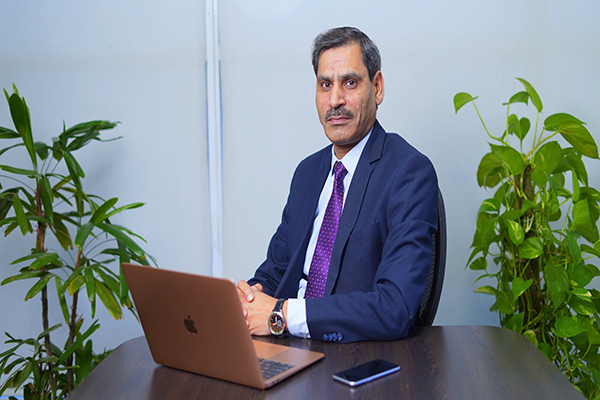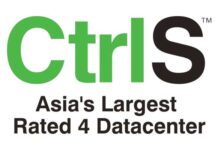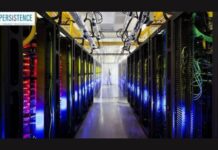In the era of “Digital Economy”, the world we live in is increasingly dominated by data resulting in the heightened demand of Data Centers. These tech-data hubs, often hidden in plain sight, power the digital infrastructure that we rely on for communication, entertainment, and work. However, as their importance grows, so do their environmental impact. As the world resources are getting skewed day-by-day, its pertinent to switch to sustainable data centers. To understand this further, lets deep-dive into the critical concept of an eco-friendly and sustainable data center, highlighting the urgency of addressing environmental concerns within this industry while providing the roadmap for a greener, more sustainable future.
The green imperative
Imagine a world where the enormous energy demands of data centers are met by renewable sources, where efficient cooling systems minimize waste, and where responsible recycling practices curb e-waste. Does it sound achievable to you? According to the International Data Corporation (IDC), global data creation is expected to reach a staggering 175 zettabytes (ZB) by 2025, and the data center industry is poised to become one of the largest global consumers of electricity by 2030. With this impending energy crisis, embracing eco-friendly practices in data centers is not just a moral choice; it’s a strategic one. In the ever-evolving landscape of data centers, several promising trends are emerging. “Green DC Solutions” are at the forefront, emphasizing sustainability and energy efficiency. “Immersion cooling” technology is gaining ground, providing innovative ways to keep servers cool while reducing energy consumption. “Hydrogen Fuel Cells” are becoming an environmentally friendly alternative to traditional power sources, offering clean and reliable energy. “Micro Grids” are enhancing data center resilience and ensuring uninterrupted operations. Lastly, “Containerized DCs” are streamlining deployment and scalability, allowing data centers to adapt to changing demands swiftly. These trends collectively represent a forward-looking approach to data center design and operation, aligning with the global shift toward greener and more sustainable solutions.
Beginning with site selection
Choosing the right location for a data center is like picking the foundation for a sustainable fortress. Climate plays a pivotal role, with areas boasting mild temperatures or those offering natural cooling options such as coastal breezes or underground cooling systems being ideal choices. Moreover, proximity to renewable energy sources, such as wind farms and solar installations, is paramount. The smart choice of location is the first step toward greener data centers.
The importance of being energy efficient
The heart of an eco-friendly data center beats with energy efficiency. Adopting energy-efficient technologies, including LED lighting, intelligent HVAC systems, and advanced power distribution, can significantly reduce carbon footprints. According to the U.S. Environmental Protection Agency (EPA), an Energy Star-rated data center is up to 30% more efficient. Energy efficiency isn’t just a buzzword; it’s a data center’s lifeline.
Harnessing the power of renewable energy sources like solar and wind can be a game-changer. On-site renewable energy generation, combined with power purchase agreements (PPAs) with green energy providers, ensures a constant supply of clean energy. Modern cooling techniques, such as hot/cold aisle containment and liquid cooling systems, are revolutionizing data center cooling. By optimizing airflow and reducing the energy required for cooling, these methods not only save money but also contribute to a more sustainable data center ecosystem.
Similarly, server virtualization and consolidation are like magic spells for energy savings. By running multiple virtual servers on a single physical server, data centers can dramatically reduce energy consumption and optimize resource usage.
Green building design
Sustainable building materials, green roofs, and ample natural lighting are integral to creating eco-friendly data centers. Earning LEED certification not only validates sustainability efforts but also ensures lower operating costs and increased property value over time. Choosing energy-efficient server hardware is not only responsible but also economically savvy. Consider Energy Star ratings and ensure responsible hardware disposal to minimize environmental impact. The rapid pace of technological advancement results in a significant amount of electronic waste. Responsible e-waste management practices, such as recycling programs and partnerships with certified recycling companies, are crucial to reducing the environmental toll. Data analytics and monitoring systems play a pivotal role in optimizing data center operations. Real-time data-driven decisions can lead to substantial energy savings and overall efficiency improvements.
Vital Metrics need for sustainable growth
Sustainability isn’t a static state; it’s an ongoing journey. In the rapidly evolving world of data centers, planning for scalable, future-proof growth is not just an option—it’s a necessity. By weaving sustainability into every thread of your data center’s fabric, you ensure that it not only meets today’s needs but remains environmentally responsible in the long term.
In line with every industry, datacenters rely on specific metrics to establish benchmarks for their performance across areas like efficiency, sustainability, and density. These critical metrics, known as Power Usage Effectiveness (PUE), Carbon Usage Effectiveness (CUE), and Water Usage Effectiveness (WUE), play a pivotal role. As the datacenter sector continues its exponential growth trend, there’s an ongoing debate about which metrics provide the most comprehensive evaluation of overall performance.
This sustainability measurement triangle, comprising PUE, CUE, and WUE, offers companies valuable insights into operational enhancements. These improvements not only reduce operating costs but also contribute to sustainable practices. Beyond the financial advantages tied to energy savings, the surging demand for data and heightened environmental consciousness are pressuring data center designers and companies to adopt eco-friendly policies. Consequently, WUE and CUE are set to become indispensable key performance indicators alongside the widely recognized PUE. This transition underscores the importance of adopting innovative IT cooling solutions over conventional alternatives.
The path forward
In the ever-accelerating digital age, data centers are the engines that drive progress. However, the environmental consequences of this growth are increasingly significant too. Building an eco-friendly and sustainable data center involves much more than energy-efficient technologies and renewable energy sources. It requires a forward-thinking approach that embraces scalability and future-proofing as essential pillars of sustainability. By planning for sustainable growth, adapting to changing technologies, and maintaining a commitment to environmental responsibility, data centers can not only meet the needs of today but also pave the way for a greener, more sustainable future. The journey to sustainability is ongoing, and each step taken in the right direction brings us closer to a world where data centers are not just powerful but also environmentally conscious, ensuring a harmonious coexistence between technology and nature.















